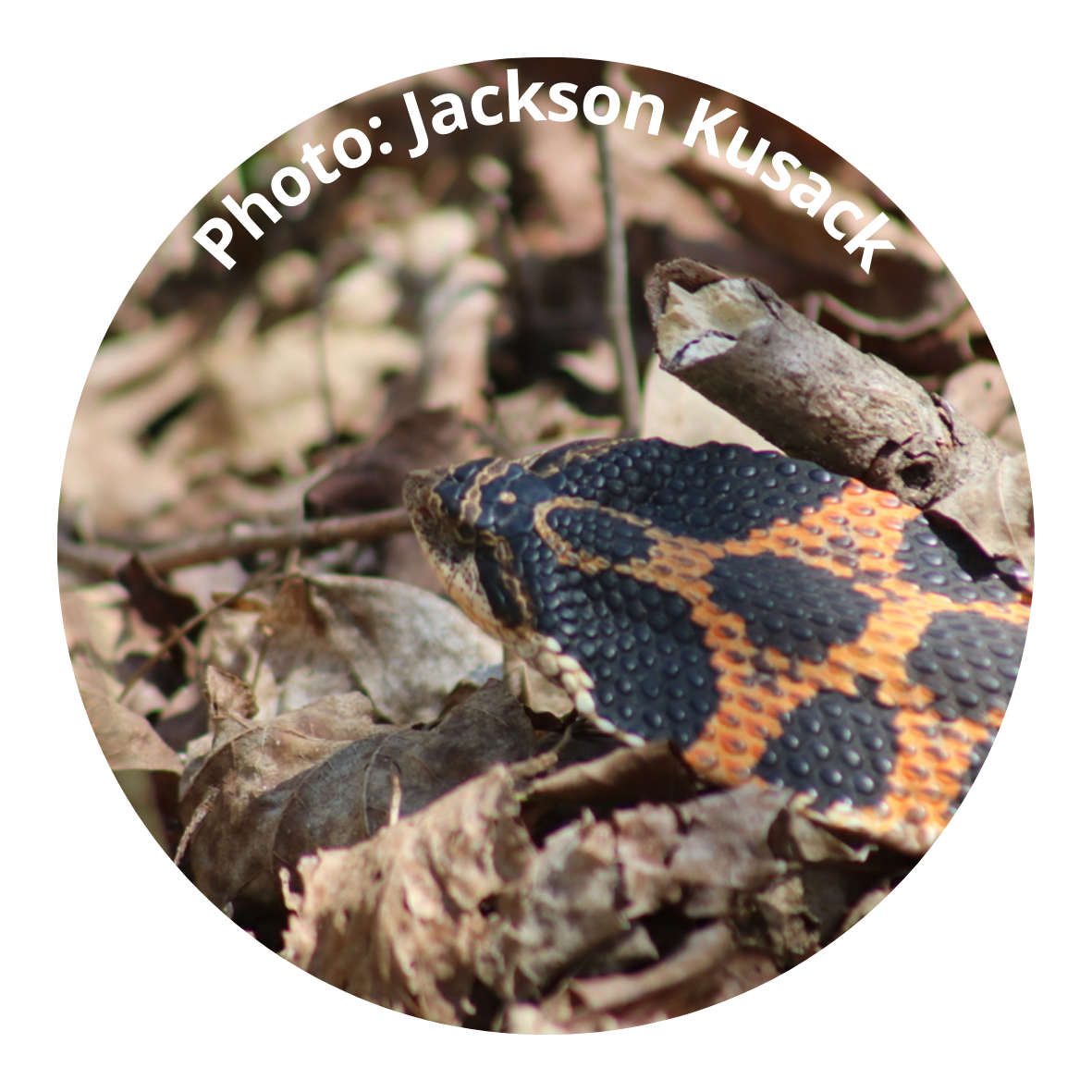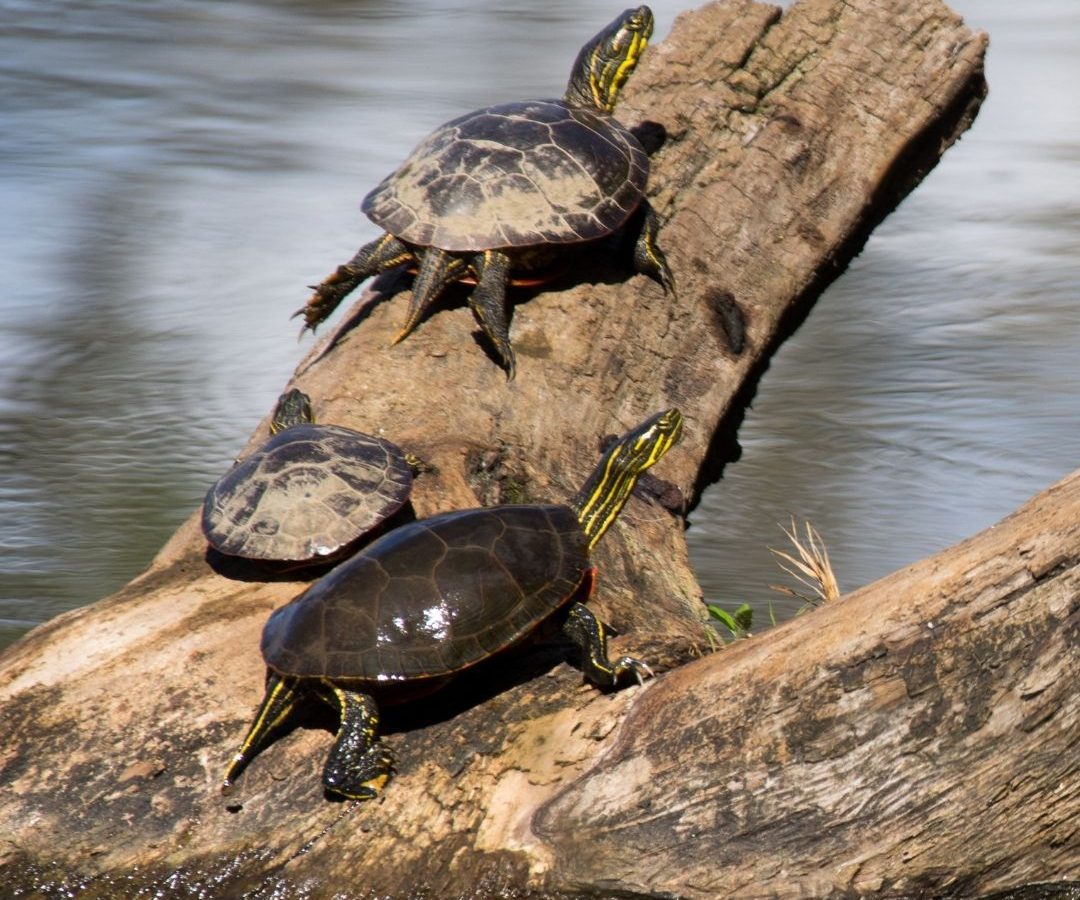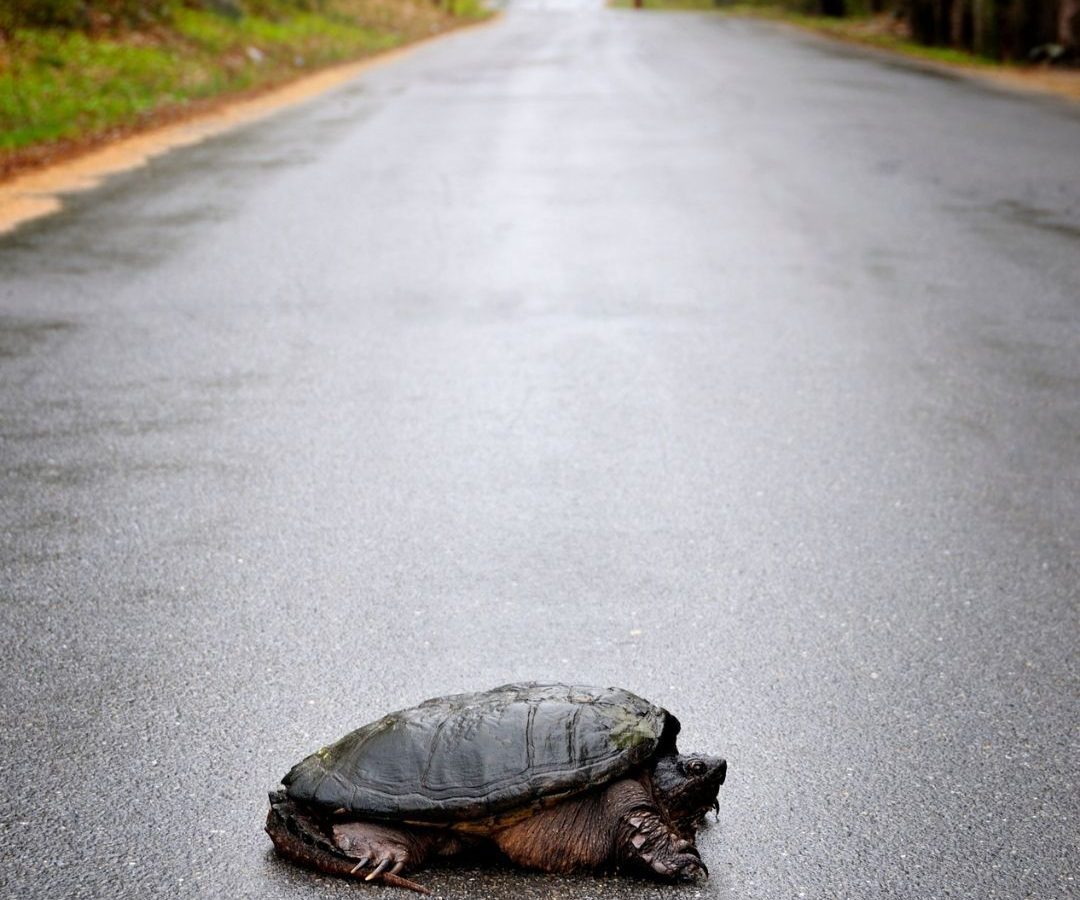
Species Identification:
The Eastern Hog-nosed Snake is a large, thick-bodied snake with a distinctive upturned snout. They have olive or dark grey colouring and brownish blotches dorsally and laterally along the body. More uncommon colours include yellow/gold with dark blotches, or even pure black (melanistic). When threatened, the Hog-nosed Snake will flatten out their neck to a similar shape as a King Cobra. Juveniles have dark blotches on their back and smaller blotches on their sides.
Diet:
The Eastern Hog-nosed Snake feeds primarily on amphibians, more notably the American toad, and the Fowler's toad. They have also been known to opportunistically eat frogs, small mammals/rodents, birds, and even turtle eggs. Juveniles feed on smaller prey such as Spring Peepers, salamanders, and invertebrates. The Eastern Hog-nosed Snake will immobilize their prey by injecting them with a mild venom as they swallow.
Biology and Behaviour:
The Eastern Hog-nosed Snake emerges from hibernation in early spring and breeds in the spring and late summer. In either June or July, females will lay between 7 and 37 eggs, but the average is usually about 25 eggs. She creates a burrow in sandy soil or light gravel, digging up the substrate with her upturned nose. In two months the hatchlings will emerge and be about 20 cm in length. In Ontario, Eastern Hog-nosed Snakes reach maturity in 4-5 years, but they can mature earlier in warmer climates. They usually reach about seven years of age. In the fall when it starts to get cool, Eastern Hog-nosed Snakes will hibernate under the soil until early spring.
When threatened, Eastern Hog-nosed Snakes will flatten their neck and loudly inhale air in an attempt to look threatening. If the danger continues, they will occasionally bluff strike, but they will rarely bite in defense. If the threat continues, the Hog-nosed Snake’s last line of defense is to lay on their back and fake death, and they will sometimes even release their bowels or excrete blood. They have many predators including Raccoons, Opossums, Red Foxes, raptors and large predatory birds, as well as other snake species.

Similar Species:
The Eastern Hog-nosed Snake is often visually confused with the Massasauga, Eastern Foxsnake, and the Eastern Milksnake, since they all have similar blotches. However, the Eastern Hog-nosed Snake is the only snake in Ontario with an upturned snout, or the ability to flatten down to look like a cobra.

Conservation and recovery strategies:
While all habitat of the Eastern Hog-nosed Snake is supposed to be protected, this only applies to crown land and government protected parks and natural areas. 38% of parks and protected areas that are supposed to be Eastern Hog-nosed Snake habitat, have not had a snake sighting since 1998. More research should go into why the Eastern Hog-nosed Snake is not in these areas today. When it comes to private land, stewardship and land acquisition policies have been put in place, but it is also crucial for the government to work with landowners to protect Eastern Hog-nosed Snakes on their property. Governments should also encourage adoption of policies by municipalities to protect significant habitat in Official plans and other planning documents (e.g. protected areas, municipalities). When it comes to road mortality, known Eastern Hog-nosed Snake areas should be signed, speed limited, and ecopassages and fencing should be put into place where high mortality occurs. Public education programs should be put into place to correctly inform the public about snakes and eliminate misinformation.
Additional Resources:
Sources:
Seburn, D. 2008. Recovery Strategy for the Eastern Hog-nosed Snake (Heterodon platirhinos) in Canada. Species at Risk Act Recovery Strategy Series. Parks Canada Agency, Ottawa. vi + 24pp.
Kraus, T. 2011. Recovery Strategy for the Eastern Hog–nosed Snake (Heterodon platirhinos) in Ontario. Ontario Recovery Strategy Series. Prepared for the Ontario Ministry of Natural Resources, Peterborough, Ontario. i + 6 pp + Appendix vi + 24 pp. Adoption of the Recovery Strategy for the Eastern Hog–nosed Snake (Heterodon platirhinos) in Canada (Seburn, 2009).







